Asia. Home to 4.4 billion people, more than half of all human beings on this planet. It is where some of the greatest civilizations the world has ever seen flourished. It is where gunpowder, papermaking, printing and the compass were invented; where Hinduism was created and the Buddha was born. The fertility of its lands is both a blessing and a curse as spices grow abundantly, fueling international trade, and later on colonization.
Traders from China, Arabia and Persia sailed to South and Southeast Asia to buy much sought-after spices to be sold in other markets, bringing them wealth. From nutmeg to clove, cinnamon, cardamom, and pepper, the spices found their way into Europe and demand kept on growing.
The ebb and flow of powers in Asia was often marked by the rise and fall of religions. So on this blog I will write the stories from my recent Spice Odyssey* in a five-chapter chronological order based on important milestones in history.
Chapter 1: Spread of Hinduism and Buddhism
South Asia is the birthplace of both Hinduism and Buddhism, two religions whose marks are still palpable not only in the Indian subcontinent, but also in modern-day Southeast Asia. From Buddhist-majority Myanmar and Thailand to Muslim-majority Indonesia – which until the 16th century AD was still a mostly Hindu-Buddhist realm – many kingdoms across the regions were at one point ‘Indianized’. However this concept has been challenged by some scholars as they believe it was rather local ingenuity enriched by intellectual exchange between the two regions that formulated Southeast Asia’s own Hindu-Buddhist identity. Today we can see this past intellectual exchange between India and Southeast Asian nations by visiting their archaeological sites.
Chapter 2: Spread of Islam
Islam arrived on the southwestern coast of India from Arabia in the 7th century AD. But it was not until the invasions of Turkic people from Central Asia in the 12th century, followed by the founding of the Delhi Sultanate in the early 13th century, that Islam became a dominant religion in India, as well as a major threat to the Hindus, leading to the creation of several powerful Hindu kingdoms in southern India. The Arab traders also introduced Islam to modern-day Indonesia and Malaysia, and gradually converted people in both areas into Muslims.
Chapter 3: Arrival of the Europeans
The closure of direct access to the spice trade following the Ottoman conquest of Constantinople (Istanbul) forced Europeans to seek an alternative route to Asia and start the Age of Discovery. Portuguese and Spanish explorers set sail across the world, ‘discovering’ America and the fabled Spice Islands among other places. Soon their English, French, and Dutch counterparts joined the race and established far more powerful trade monopolies around the globe.
Chapter 4: European Colonization of Asia
Along with more commerce, the arrival of the Europeans in Asia also brought Christianity to lands at the time dominated by the Hindus, Buddhists, and Muslims. Today the Philippines and Timor-Leste are the only predominantly Catholic countries in Asia, but there is a considerable amount of Christians in Indonesia, Malaysia and some regions in India and Myanmar. Law, government, and education systems in many parts of Asia today are the remnants of centuries of European colonization.
Chapter 5: Asian Cuisine Today
Thanks to European traders and colonists, commodities such as chili and peanut from the Americas now form an essential part in Southeast Asian cooking. In Indonesia people love to eat almost everything with sambal, and peanut sauce is the base for sate (satay), gado-gado, ketoprak, pecel, and many other dishes which make up Indonesia’s traditional cuisines. But throughout my six-month trip across seven Asian countries, one of the most surprising things I discovered was the fact that Karimeen fry (fried freshwater fish with spices) in Kerala tasted almost identical to my mother’s fried fish. I wonder if it was the traders from Calicut who introduced the same spices and cooking methods to the people in my ancestral island of Java.
*Click here for the summary of the first three months of the Spice Odyssey, and here for the rest of the trip.
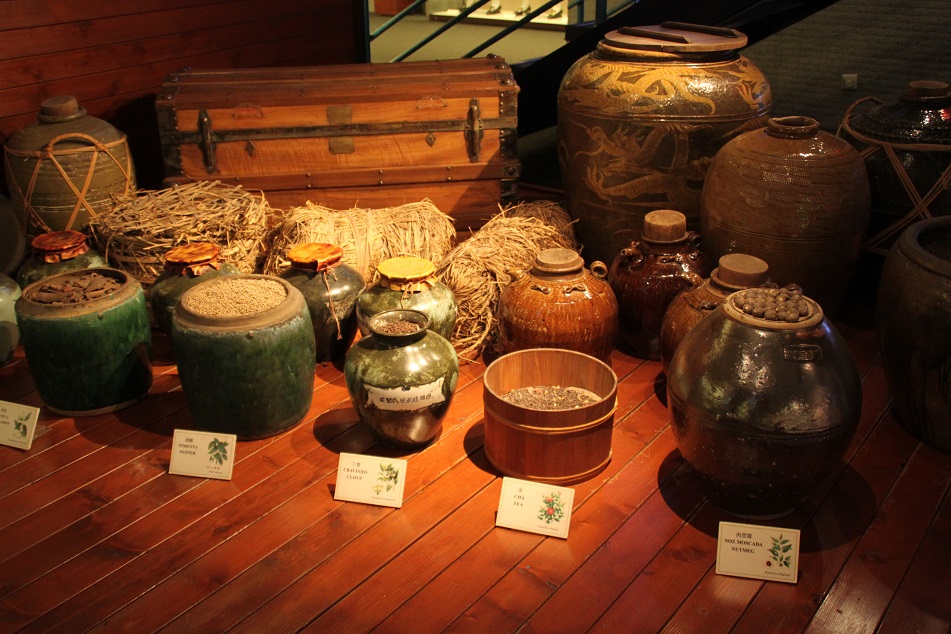
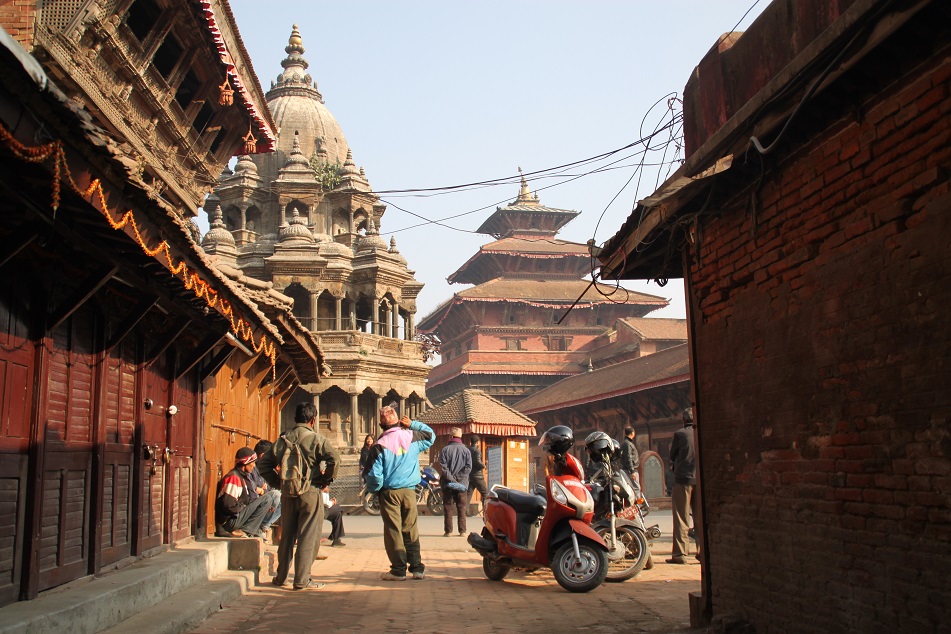
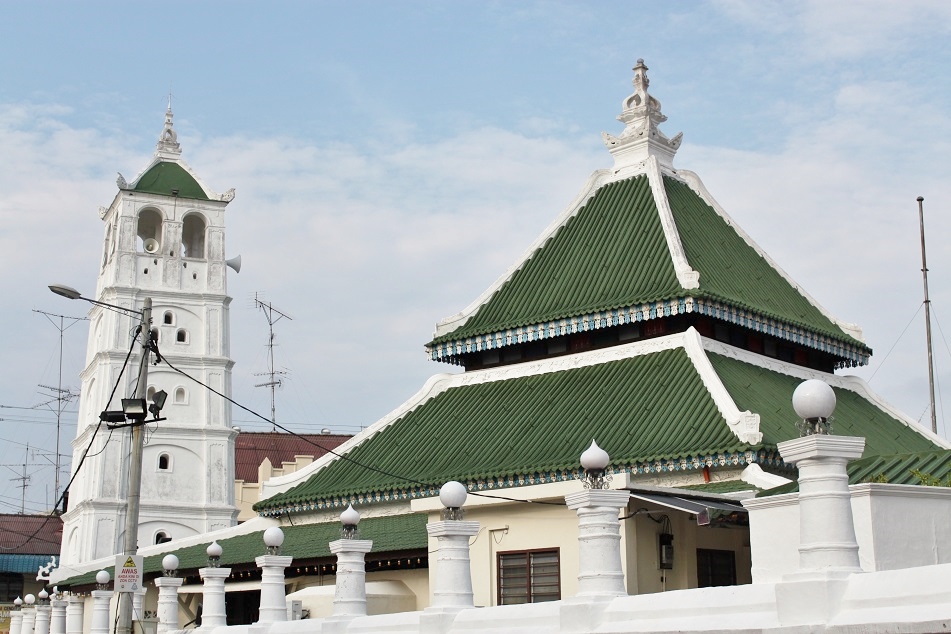
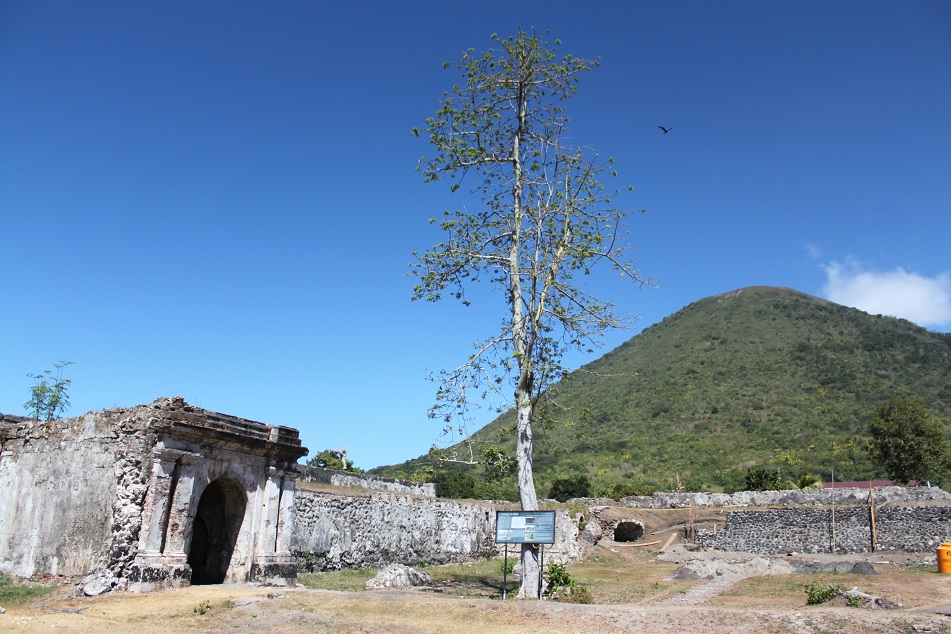
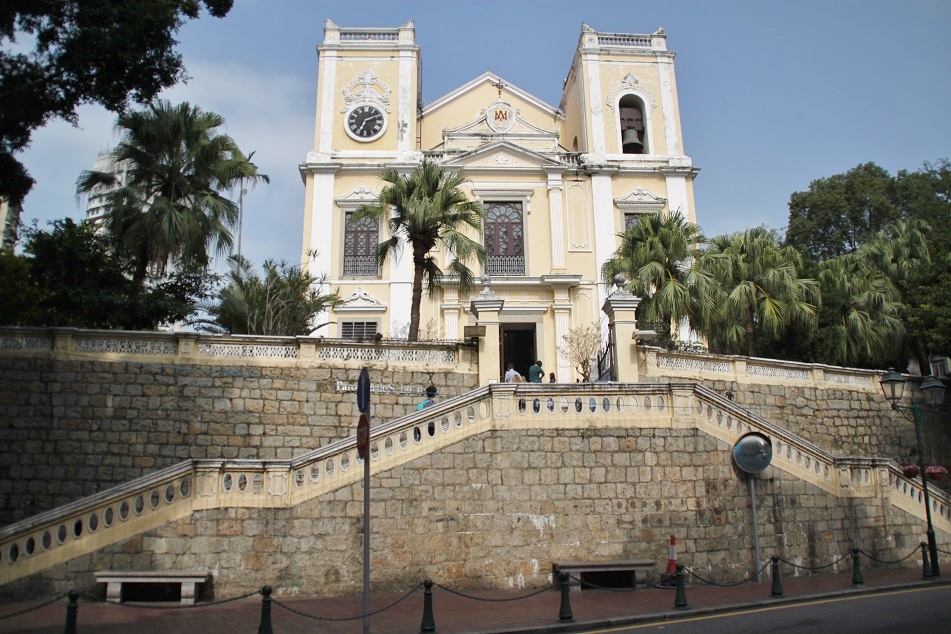
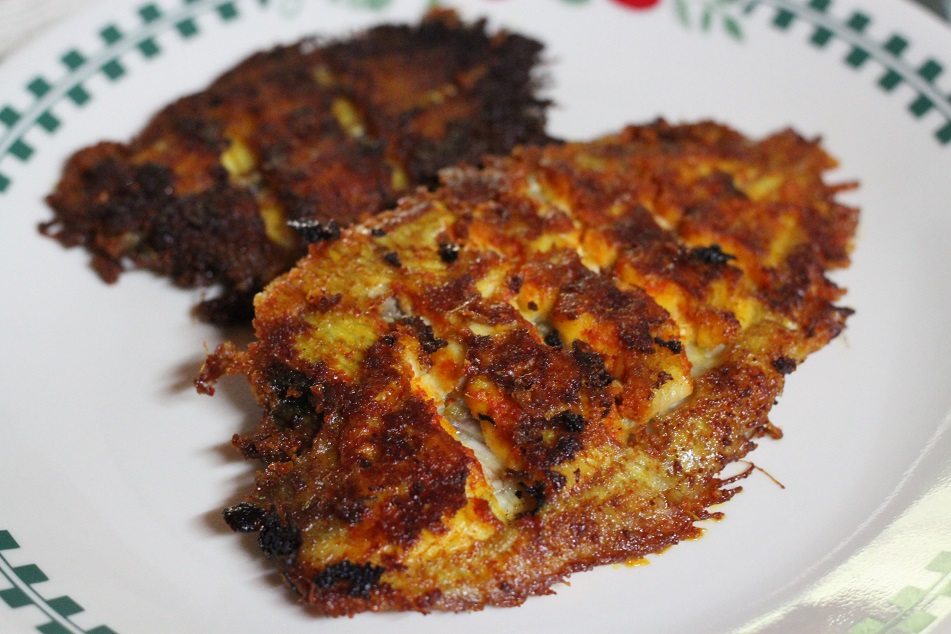
Great Post
LikeLike
Thank you, Mukul. I hope this introduction gives you and others a better idea of the upcoming posts on this blog.
LikeLiked by 1 person
will keep a look out for what will follow
LikeLiked by 1 person
I am looking forward to reading these posts and others about your trip. It is amazing how spices transformed this area of the world.
LikeLike
Thanks Jeff. Actually spices did transform the whole world. Without it the people in Brazil would have not been speaking Portuguese, Spanish would have never been the lingua franca of Latin America, and Macau would have not had egg tarts and African Chicken, to name some. Spices are like cats — they control us! 🙂
LikeLike
Very interesting
LikeLike
Thanks Miriam. More stories to come soon. 🙂
LikeLiked by 1 person
Look forward to them
LikeLike
Finally Bama… I see books of yours in my mind. 😉
LikeLike
Books… they require a lot of commitment, and thorough research. I’ll be happy just writing on my blog, but we’ll see where this goes. 🙂
LikeLiked by 1 person
As always your photos and information are awesome, and I will enjoy what’s to come! I have learned so much about food, religions, and culture of Asia from your blogs – keep them coming!
LikeLiked by 1 person
Thank you, Marilyn. My travels taught me about food, religions, cultures and history of Asia, and sharing them with everyone is something I really enjoy doing. So it’s nice to know that you learned new things from my blog. Stay tuned! 🙂
LikeLiked by 1 person
Bama, what a wonderful post to kick off the New Year. It has been a privilege to travel so long with you and I can’t wait for our next joint trip. If only we could have extended our Spice Odyssey for another two months!
LikeLiked by 1 person
Makasih James. The pleasure is mine. We could have extended our Spice Odyssey if rupiah didn’t fall too drastically against the US dollar. Well, I learned my lesson.
LikeLiked by 1 person
I want to taste the food
LikeLike
Tasting local food is something I always do when I travel. Sometimes I ended up loving it, but there were times when I could stand having local food only for a few days. 🙂
LikeLiked by 1 person
Karimeen fry! How I loved that! Have you tried ‘pare goreng garing’ ala Kerala also?
That’s why I consider that going to Kerala is like visiting grandparents, you’re so familiar with peaceful village life & the cuisine 🙂
LikeLike
Badai! Meni jiga ucing, muncul lamun aya lauk. 😀
Unfortunately we didn’t try pare in Kerala. The food was definitely one of the highlights of my stay in Kerala. We wish we could try karimeen pollichathu, but we couldn’t find it. Did you try palm toddy?
LikeLike
Hahaha urang pan ucing anggora 😉 Palm toddy wasn’t my interest although we visited the palm plantation and were shown how the toddy was made. Malah kabita ngeliat kelapa muda, hahaha!
LikeLike
You didn’t miss anything. 🙂 Young coconut is far much better.
LikeLike
Welcome back Bama! Senang bisa baca postinganmu lagi di sini. Deg-degan banget nih baca pembuka The Spice of Odyssey, campuran antara rasa gak sabar pengen baca detailnya dan penasaran karena sudah membaca bocorannya.
Aku suka dengan caramu mengelompokkan serial ini nantinya, yang dibagi dalam lima bagian besar kronologis. Buatku ini sudah seperti buku sejarah dengan sentuhan baru yang personal. Masing-masing akan menjadi bacaaan yang asyik pastinya, bahkan bagian kulinernya akan sama berbobotnya dengan bagian-bagian lain. Aku yakin!
Aku akan jadi salah satu orang yang dengan sabar menantikan kelanjutan dari postinganmu ini. Pelan-pelan aja Bam, supaya dirimu sempat mengendapkannya dan menuliskan ulang semua pengalaman dalam enam bulan terakhir ini ke dalam serial-serial yang ‘menyenangkan dan bermanfaat’.
Bam, mungkin ini terlalu dini, tapi aku rasa dirimu perlu mempertimbangkan untuk membukukan semua ini. Aku yakin dirimu akan bisa menghasilkan buku perjalanan yang beda. Begitu juga dengan James. Dipertimbangkan saja, okey. Aku support banget deh kalian berdua!
LikeLike
begini kalau dua pakar sejarah bersatu ya 🙂
LikeLiked by 1 person
Hehe, kalo aku sih masih jauh dari pakar. Aku cuma antusias dengan sejarah, kalo pakar itu semacam profesor yang memang sudah paham lika-liku sejarah menurutku. 🙂
LikeLike
tapi kak Bama ama Bartz sama satu lagi si Gara jago banget dah itu banyak baca sejarah ya kak?
LikeLike
Dulu pas SMP atau SMA pernah baca buku sejarah yang ditulis dengan sangat menarik sehingga saya yang tadinya gak tertarik sejarah bisa sangat antusias baca bukunya. Sampai sekarang malah keterusan suka. 🙂
LikeLike
Peminat sejarah tepatnya 🙂
LikeLike
koreksi: peminat sejarah yang jago sejarah 😀
LikeLiked by 1 person
Makasih Bart! Aku malah deg-degan baca komenmu soalnya kali ini yang akan aku tulis gak lepasan satu post, tapi harus ada kesinambungan antarpost. Sik aku tak bertapa dulu. 🙂
Nanti ceritaku sih masih jauh lah dari buku sejarah. Mungkin lebih ke pengenalan sejarah, soalnya kalo udah nyebut kata buku kok ya rasanya riset yang aku lakukan belum dalam-dalam banget. Apapun itu mudah-mudahan bisa dinikmati dan bermanfaat.
Masukanmu sik tak pertimbangkan dulu (sekarang lebih fokus ke timbangan badan dulu, hehe). Makasih banyak ya Bart. Nanti tak kabari kalo aku ke Jakarta/Bogor.
LikeLiked by 1 person
Sama-sama Bama. Insya Allah pasti bisa, tinggal atur-atur aja 🙂
Amiin amiin, insya Allah bermanfaat, dan bikin mupeng pastinya hahaha.
Hahaha emang berat badan nambah apa? Aku pikir langsingan, secara enam bulan di jalan. Eh tapi kamu nafsu makan besar sih yaaa? *krik krik*
Siaaap! Ditunggu di Jakarta/Bogor 🙂
LikeLike
Di Hong Kong kan aku lebih banyak makan dibanding hiking soalnya cuaca kurang bersahabat. Dan aku gampang lapar orangnya. 😀
LikeLike
((Gampang lapaaar)) 😀
Kita harus kulineran bareng lagi deh, syukur2 James bisa gabung 🙂
LikeLike
Kata beberapa temenku Bama itu BAnyak MAkan. 😀
Mudah-mudahan James bisa gabung.
LikeLiked by 1 person
Cocok 😀
LikeLike
Looking forward to future posts Bama!
Alison
LikeLike
Thanks Alison! At the moment I’m writing the first part of Chapter 1. 🙂
LikeLiked by 1 person
what a great introduction, gak sabar menunggu cerita berikutnya. salut dengan angle sejarah yang Mas Bama pilih, bikin saya semakin memahami perjalanan rempah-rempah secara menyeluruh. 🙂
LikeLiked by 1 person
Thank you, Yuki. Mudah-mudahan beneran nanti blog posts saya bisa membantu Yuki dan yang lainnya lebih memahami perdagangan rempah-rempah dan peristiwa-peristiwa sejarah yang terkait.
LikeLiked by 1 person
Bama what a well researched and written post. Amazing to me spices could have had such an impact.
LikeLiked by 1 person
Thank you, Sue. I, too, was surprised to learn that there’s a long history behind the dishes I eat, the spices my mother uses, and other things we take for granted.
LikeLiked by 1 person
Bama, what an interesting travel you had, I am impressed by your interest to the past & to travel for the sake of history..best wishes for your future endeavour!
LikeLiked by 1 person
We all have our own reasons to travel. For you it’s the world’s underwater beauty and for me it’s ancient sites, well, mostly. Sometimes I imagined how ancient people walked the same pathway I walk, climbed the same steps I take, and dwell in the places I visit. It’s just so fascinating. Thank you, Indah, and wishing you great moments in your new home!
LikeLike
Great article! Bon voyage in ”the lost world”.
LikeLike
Thank you, Marius. Happy travels too!
LikeLike
A fascinating opener Bama. I can imagine the wealth of historical details you have compiled from your recent epic journey. Look forward to reading all of it with anticipation.
LikeLike
Thanks Madhu. Since I am by no means a historian, my upcoming posts will only serve as an introduction to each place I visited. Currently I’m really in the mood for writing, so this month will be the first productive month after a while. 🙂
LikeLiked by 1 person
Refreshing with entirely diverse pics!!!!
LikeLike
Thank you, Umesh. Choosing which photos I want to use in each post is both fun and frustrating as I always take too many photos every time I travel. 🙂
LikeLike
ditto here… I think that is the beauty of modern digital technology [cameras]. This facility was not available with old analog cameras. Instead we had to be selective before clicking.
LikeLike
True. Time, experience and other photographers are our best teachers.
LikeLiked by 1 person
Nice intro, and couldn’t wait to read the stories. Why don’t you just write a book haha?
Hv u ever wondered that probably your great great great grand parents came from Kerala (referring to chapter five)? ehm … lolsss 😀
LikeLike
Thank you, Tim. I would love to write a book, but maybe writing the stories on my blog first actually helps me understand the big picture better before exploring other opportunities.
I do wonder where my ancestors came from, because a lot of people say I don’t look Javanese. 🙂
LikeLike
Hello Bama,
Every time you talk about the food and share your food dishes makes me want to try them. I have never tried Karimeen Fry from Kerala, India but it looks so good I want to try it! It is also interesting that you mentioned that chili and peanut was brought to Southeast Asia from the Americas. I was wondering why Southeast dishes used a variety of chili in their cooking and how well they came to embrace this important ingredient.
LikeLike
Hi Liz,
Karimeen Fry was really good — well seasoned, not too dry, not too soggy. It was definitely one of the best dishes I had in Kerala. I have to do more research as to how Southeast Asians incorporated that foreign flavor in their dishes that would give them that extra kick in the mouth. Today most Indonesians are so addicted to sambal (ground chili paste with other ingredients) so much so there’s a joke that we can eat rice just with sambal and we’ll be happy. 🙂
LikeLike
That’s short and nice, like it! 🙂 Wanna see it all myself!
LikeLike
Thank you. Go see this part of the world! 🙂
LikeLike
One day! 🙂
LikeLike
Great and interesting post!
LikeLike
Thank you!
LikeLiked by 1 person
Pingback: Ternate: Science and Superstition | What an Amazing World!
This is so elaborate! You should publish a book!
LikeLike
That’s very kind of you. It looks like more and more people are encouraging me to write a book. I will seriously think of it. Thanks for the encouragement!
LikeLike
That is good! Go for it! You have very original viewpoints and your posts are full of knowledge on diverse topics.
LikeLike
Really appreciate your kind words, Vy!
LikeLiked by 1 person
Pingback: The Faces of Banda | What an Amazing World!
Sesungguhnya aku ini katro kalo urusan merangkai sejarah, dan Spice Odissey jadi ‘buku sejarah’ pertama yang aku baca dengan keinginan sendiri hahaha. Kalo udah dijadiin buku atau e-book, aku mau yah!
LikeLike
Wah makasih banyak lho atas supportnya. Untuk jadi buku atau bahkan e-book sih belum. Tapi ke depannya sih ada keinginan ke arah sana, entah kapan terwujudnya, hehe.
LikeLike
Pingback: Influences from Bharat | What an Amazing World!